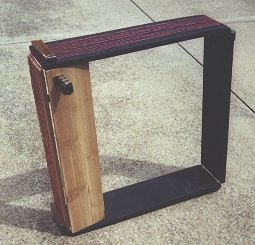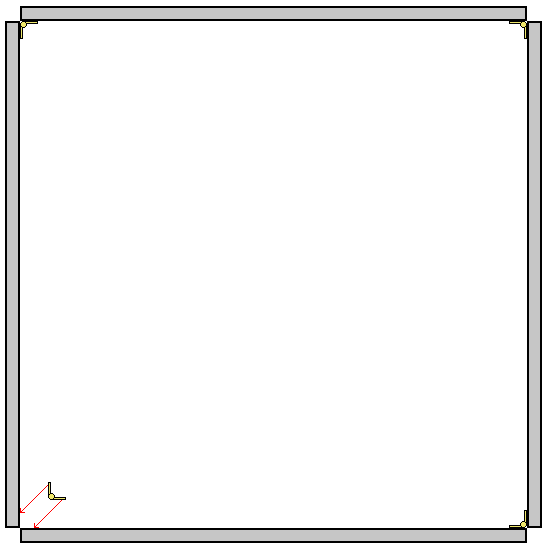
Folding loop antenna - deployed.

Folding loop antenna - folded.

Folding loop antenna - deployed.

Folding loop antenna - folded.
In my study of AM Box Loop Antennas, I have quickly realized that no matter how good the reception improvement may be using a loop - the loop antenna itself is large and cumbersome. This limits its usefulness to home installations. The large loops do not lend themselves to portability. How can that be changed?
As a teenager in Midland, TX, I brought the best radios available to the pool where I spent many a lazy summer afternoon. No matter what I tried, good radio stations such as KLIF Dallas was just too weak. Even WFAA, during its short career as a top 40 station, was so weak that I had to turn the volume control all the way up just to hear the signal. I wish I had known about loop antennas at the time, but more than that - I wish I had invented a "folding loop", one that would be easy to carry in, quick to set up, yet not compromise the performance of a large loop in any way.
Now, 25 years later, I am faced with a similar situation. My daughter loves to listen to "Radio Disney" - KMKI, a 5000 Watt AM station on 620 kHz from the Dallas area. She wants to hear it when she visits grandad in Lubbock, TX 330 miles away. And she wants to hear it at a pool in the neighborhood where he lives. To her, all that matters is the music. It must be clear. What we carry to the pool must be a convenient size, light weight, easy to set up, and quick to adjust. It must work the first time, there is no time for tinkering - and it must be reliable. A perfect application for a "folding loop".
I know that one company makes a "pocket loop" - no doubt taking advantage of the spring characteristics of their loop antenna structure to allow it to be twisted into a smaller shape - similar to some automotive shades. Good idea, but I bet the things get tangled after a while - like a slinky. Their unit costs about $150, making it a lot more serious problem once it does get tangled!
So - with twisting coils not an option, what else could I try? Some 27 inch shelves discarded from a home entertainment system provided the answer.
To construct the folding loop, it is necessary to procure the following material:
Click on the pictures to see them full size ---







The end result is a odd looking contraption when folded, 54 inches long, about 11 inches wide half of its length, and 5 1/2 inches wide for the other half. It has droopy wire hanging on it, and has a tuning capacitor sticking out. It is long enough to be slightly inconvenient, and heavy enough to be slightly annoying - but the weight can be reduced by changing the thickness of the wood, 1/4 inch plywood, perhaps.
You are sure to get a few stares walking into a public area such as a pool with this contraption, but as long as you re-assure anxious lifeguards that you have no intention of taking it into the water as a "surf board", you should be fine!
If the receiver has a ferrite bar antenna, there are two methods of coupling. One is to wrap a few turns of wire around the ferrite bar at the end opposite the existing windings, and couple those windings to the coax. The other is to simply get the radio close to the loop.
Actual tests of the loop have shown that it suffers from a low "Q" - the same as the four foot loop. I have yet to solve this problem, but suspect it has a lot to do with the quality of the tuning capacitor and the wire used. The doorbell wire has over an ohm of resistance over 12 turns - I had to remove a turn because I had a 500 pF tuning capacitor instead of a 365 pF. I suspect that wire with lower resistance would improve performance considerably. Even with the low Q - it improves reception of inexpensive receivers to a great degree. Better quality receivers are not improved as much.